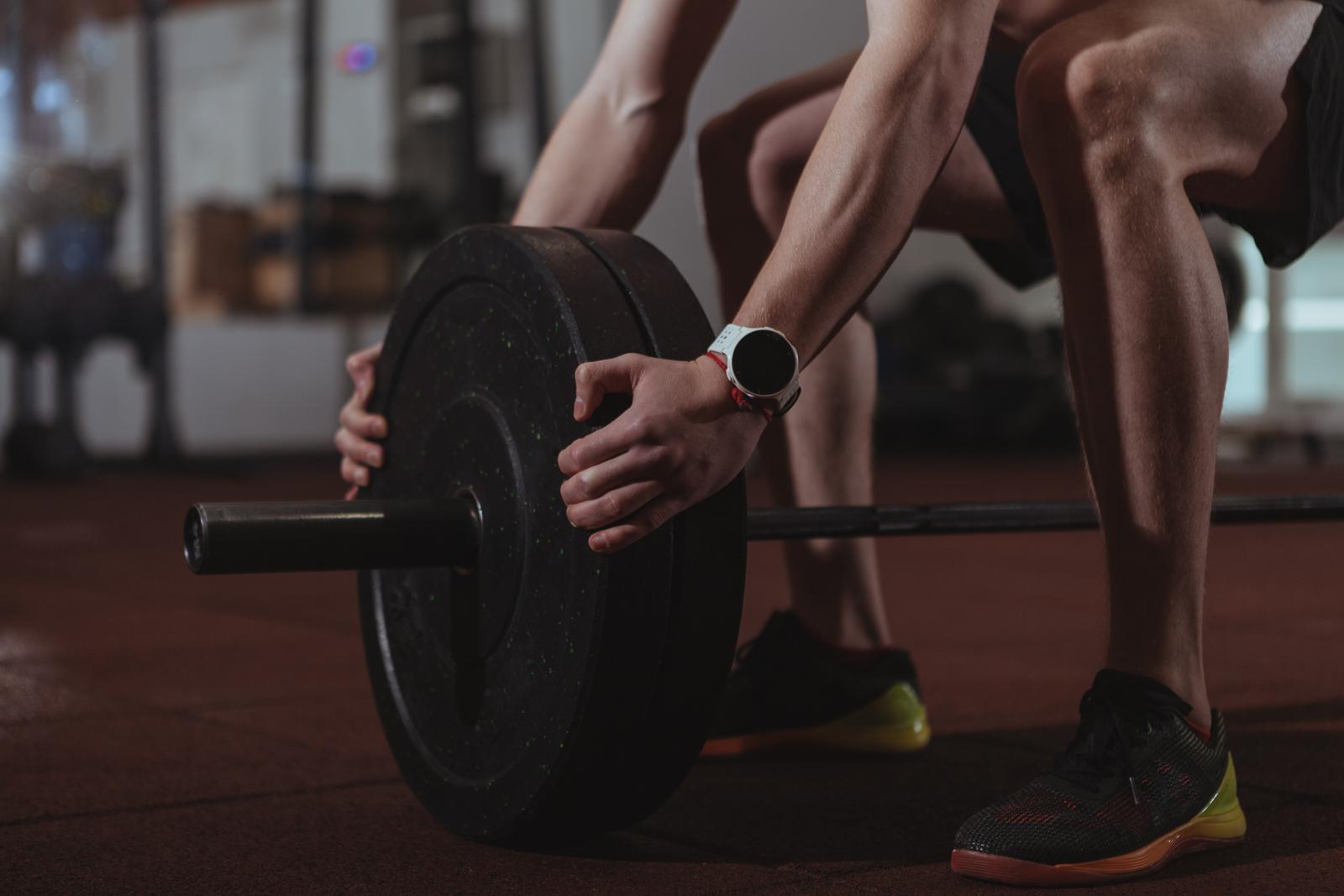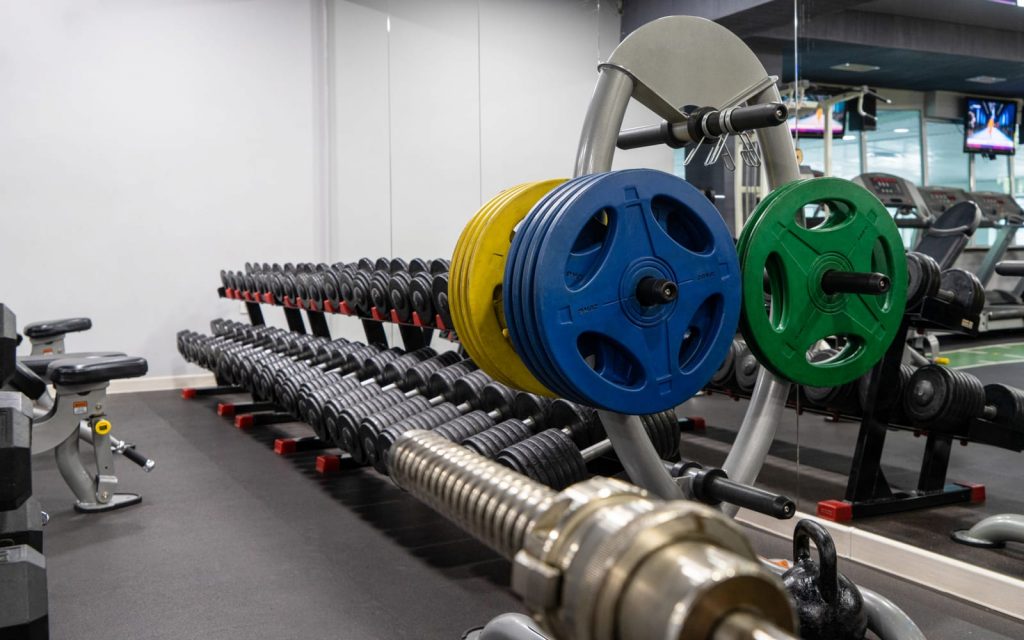
A Complete Guide to Weight Plates and Their Best Uses
Weight plates are a must-have. These versatile pieces of gym equipment come in various materials and designs, each serving a specific purpose. From bumper plates to steel or iron plates, and Olympic weight plates, there are options for every fitness enthusiast. With different sizes and weights available, you can find the perfect weight plate to match your fitness level and goals. The key is choosing the right type of weight plate that suits your training needs and equipment setup.
Weight Plates – Pros and Cons of Bumper Plates
Excellent Durability and Heavy Use Endurance
Bumper plates are known for their exceptional durability. These weight plates can withstand heavy use without sustaining any damage. Whether you’re a seasoned weightlifter or just starting out, bumper plates are built to last. You won’t have to worry about them cracking or breaking, even with intense workouts.
Low Bounce Rate for Olympic Lifting and CrossFit Workouts
One of the key advantages of bumper plates is their low bounce rate. When you drop these plates from overhead during Olympic lifting or CrossFit exercises, they don’t bounce as much as other types of weight plates. This feature ensures safety while allowing you to maintain control over the weights.
Higher Price Tag Compared to Other Weight Plates
While bumper plates offer exceptional quality and durability, they do come with a higher price tag compared to other weight plate options. Their superior construction and materials contribute to this increased cost. However, if you’re serious about your fitness journey and want equipment that will stand the test of time, investing in urethane bumper plates may be worth it.
Long-Lasting Investment
Despite the higher price point, bumper plates are a long-lasting investment. Their high-quality construction ensures that they will serve you well for years to come without needing frequent replacements. If you’re looking for weight plates that can handle heavy use over an extended period without wearing down or losing their shape, bumper plates are an excellent choice.
Pros and Cons of Training Bumper Weight Plates
Rubber Plates for Shock Absorption
Training bumper plates are made from rubber, which provides excellent shock absorption during lifts. This means that when you drop the weights, they won’t make as much noise or cause damage to the floor. It’s like having a built-in cushion for your weight!
-
Pro: The rubber material helps protect the barbell and the floor from damage.
-
Pro: The shock absorption makes it easier on your joints and reduces the risk of injury.
Lower Cost Option for Beginners
If you’re just starting out with weightlifting, training bumper weight plates are a great option because they tend to have a lower cost compared to other types of plates. This is especially beneficial if you’re on a budget but still want to invest in quality equipment.
-
Pro: They offer an affordable way to get started with weightlifting.
-
Pro: You can gradually add more weight plates as you progress without breaking the bank.
Higher Bounce Rate and Durability Considerations
One thing to keep in mind is that training bumper weight plates may have a higher bounce rate than urethane bumpers when dropped. While this can be advantageous for certain exercises where you want some rebound, it might not be ideal for others that require more stability.
-
Con: The higher bounce rate can affect your lifting technique and control.
-
Con: These plates may not be as durable as urethane bumpers but still offer decent longevity.
Exploring Steel or Iron Plates for Your Home Gym
Steel or iron-weight plates are a classic choice for home gyms. They offer stability during lifts, making them ideal for strength training exercises. These plates are also more affordable compared to materials like urethane or rubber.

One advantage of steel or iron weight plates is their durability. They can withstand heavy use and last long, making them a cost-effective option for home gym owners. These plates come in various sizes, allowing you to customize your workout routine according to your fitness goals.
However, it’s important to note that steel or iron weight plates require proper maintenance. If not cared for correctly or stored in a humid environment, they can rust over time. To prevent this, it’s recommended to wipe them down after each use and store them in a dry area.
Another consideration is the noise factor. When dropped, steel or iron weight plates tend to produce more noise compared to rubberized options. This may be a concern if you have neighbors close by or prefer a quieter workout environment.
Pros and Cons of Mighty Grip Olympic Weight Plates
Pros of Mighty Grip Olympic Weight Plates
-
Excellent grip: One of the biggest advantages of using Mighty Grip Olympic weight plates is their superior grip. These plates are designed with a special texture or pattern that provides enhanced grip, allowing weightlifters to maintain control and stability during Olympic lifts.
-
Durability: Mighty Grip Olympic weight plates are built to last. Made from high-quality materials such as cast iron or steel, these plates can withstand heavy use and resist damage over time. This durability ensures that you can rely on them for your Olympic lifting workouts without worrying about wear and tear.
-
Easy identification: Another benefit of Mighty Grip Olympic weight plates is their clear identification markings. Each plate is clearly labeled with its weight, making it easy for you to quickly identify and select the desired load for your lifts.
Cons of Mighty Grip Olympic Weight Plates
-
Limited options: While Mighty Grip Olympic weight plates offer excellent grip and durability, they may have limited options in terms of available weights. Some brands may not offer a wide range of plate sizes, which could limit your ability to progressively increase the load on your lifts.
-
Higher cost: Compared to standard Olympic weight plates, Mighty Grip versions can be more expensive due to their specialized design and features. If you’re on a tight budget, this higher cost may be a drawback when considering these types of weight plates.
Tips for Choosing the Right Weight Plates for Your Home Gym
Now that you have a better understanding of the different types of weight plates available, it’s time to choose the right ones for your home gym. Consider your specific fitness goals and budget when making this decision. If you’re focused on Olympic lifting or want to reduce noise and floor damage, urethane bumper plates may be the best choice. On the other hand, steel or iron plates might be more suitable if you’re looking for affordability and durability.
Remember, investing in quality weight plates is essential for a safe and effective workout. Take your time to research and compare different options before making a purchase. By selecting the right weight plates for your home gym, you’ll ensure that you have the necessary tools to reach your fitness goals.
FAQs
What is the difference between bumper plates and regular-weight plates?
Bumper plates are made from rubber or urethane material and are designed specifically for Olympic lifting and functional training. They are typically larger in diameter than regular weight plates and can be dropped from overhead without causing damage to the floor or barbell. Regular weight plates, on the other hand, are usually made from steel or iron and come in various sizes depending on their weight.
Can I mix different types of weight plates?
Yes, you can mix different types of weight plates as long as they fit securely onto your barbell. However, keep in mind that mixing materials like rubber bumper plates with steel or iron plates may result in uneven distribution of weight during lifts.
How do I determine which weight plate is right for me?
To determine which weight plate is right for you, consider factors such as your fitness goals, budget, type of exercises you’ll be doing, noise tolerance level (rubber bumper plates are quieter), and space limitations (some materials take up more space than others).
Do I need to buy a full set of weight plates?
It depends on your fitness goals and budget. If you’re just starting out, you may want to begin with a smaller set and gradually add more weight plates as needed. However, if you have specific strength training goals or prefer having a wide range of weights readily available, investing in a full set may be more practical.
How do I properly store weight plates?
To properly store weight plates, consider using a weight plate tree or rack that can hold the plates securely and keep them organized. This will help prevent damage to the plates and make it easier for you to find the right weight when needed.
